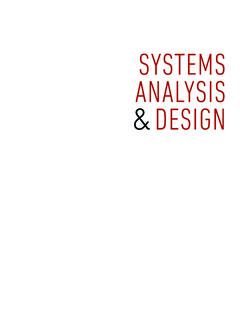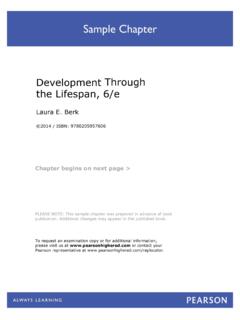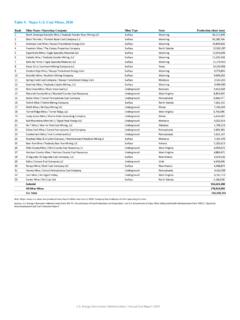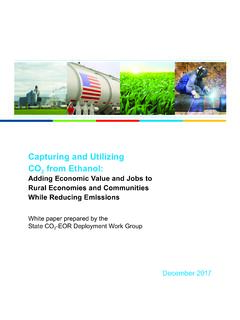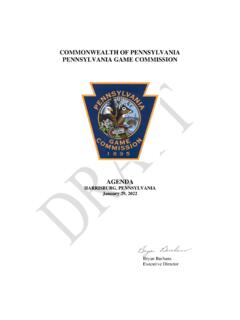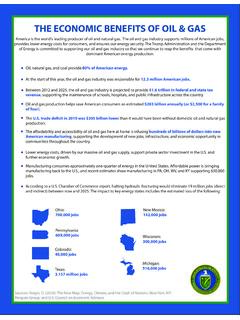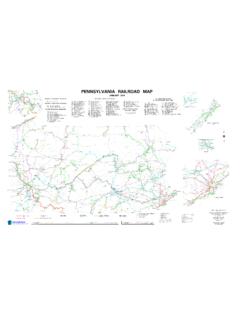Transcription of SAFETY AND HEALTH MOVEMENT, THEN AND NOW - Pearson
1 C H A PT ER. 1 SAFETY AND HEALTH . MOVEMENT, THEN. AND NOW. Learning Objectives Summarize key developments relating to workplace SAFETY and HEALTH prior to the Industrial Revolution List the most important milestones in the SAFETY movement Explain how workplace tragedies have changed the SAFETY movement Describe the role of organized labor in the SAFETY movement Describe the roles specific HEALTH problems have played in the SAFETY movement Explain how SAFETY and HEALTH standards apply to more than just manufacturing Describe the development of accident prevention programs as part of the SAFETY movement Describe the SAFETY and HEALTH movement today Explain the integrated approach to SAFETY and HEALTH Describe how new materials, new processes, and new problems are affecting the SAFETY and HEALTH movement today Summarize the rapid growth that has occurred in the SAFETY and HEALTH profession Explain how the movement of manufacturing jobs overseas has affected the accident rate in the United States The SAFETY movement in the United States has developed steadily since the early 1900s.
2 In that time period, industrial accidents were commonplace in this country; for ex- ample, in 1907, more than 3,200 people were killed in mining accidents. Legislation, precedent, and public opinion all favored management. There were few protections for workers' SAFETY . 1. 1 10/13/17 9:37 AM. 2 chapter 1. Working conditions for industrial employees today have improved significantly. The chance of a worker being killed in an industrial accident is less than half of what it was 60 years According to the National SAFETY Council (NSC), the current death rate from work-related injuries is approximately 4 per 100,000, or less than a third of the rate 50 years Improvements in SAFETY until now have been the result of pressure for legislation to promote SAFETY and HEALTH , the steadily increasing costs associated with accidents and injuries, and the professionalization of SAFETY as an occupation.
3 Improvements in the future are likely to come as a result of greater awareness of the cost-effectiveness and resultant competitiveness gained from a safe and healthy workforce. This chapter examines the history of the SAFETY movement in the United States and how it has developed over the years. Such a perspective will help practicing and prospective SAFETY professionals form a better understanding of both their roots and their future. DEVELOPMENTS BEFORE THE INDUSTRIAL REVOLUTION. It is important for students of occupational HEALTH and SAFETY to first study the past. Understanding the past can help SAFETY and HEALTH professionals examine the present and future with a sense of perspective and continuity. Modern developments in HEALTH and SAFETY are neither isolated nor independent.
4 Rather, they are part of the long con- tinuum of developments in the SAFETY and HEALTH movement. The continuum begins with the days of the ancient Babylonians. During that time, circa 2000 bc, their ruler, Hammurabi, developed his Code of Hammurabi. The code encompassed all the laws of the land at that time, showed Hammurabi to be a just ruler, and set a precedent followed by other Mesopotamian kings. The significance of the code from the perspective of SAFETY and HEALTH is that it contained clauses dealing with injuries, allowable fees for physicians, and monetary damages assessed against those who injured This clause from the code illustrates Hammurabi's concern for the proper handling of injuries: If a man has caused the loss of a gentleman's eye, his own eye shall be caused to be lost.
5 4. This movement continued and emerged in later Egyptian civilization. As evi- denced from the temples and pyramids that still remain, the Egyptians were an indus- trious people. Much of the labor was provided by slaves, and there is ample evidence that slaves were not treated well that is, unless it suited the needs of the Egyptian taskmasters. One such case occurred during the reign of Rameses II (circa 1500 bc), who un- dertook a major construction project, the Ramesseum. To ensure the maintenance of a workforce sufficient to build this huge temple bearing his name, Rameses created an industrial medical service to care for the workers. They were required to bathe daily in the Nile and were given regular medical examinations. Sick workers were The Romans were vitally concerned with SAFETY and HEALTH , as can be seen from the remains of their construction projects.
6 The Romans built aqueducts, sewerage sys- tems, public baths, latrines, and well-ventilated As civilization progressed, so did SAFETY and HEALTH developments. In 1567, Philippus Aureolus produced a treatise on the pulmonary diseases of miners. Titled 2 10/13/17 9:37 AM. SAFETY and HEALTH Movement, Then and Now 3. On the Miners' Sickness and Other Miners' Diseases, the treatise covered diseases of smelter workers and metallurgists and diseases associated with the handling of and exposure to mercury. Around the same time, Georgius Agricola published his treatise De Re Metallica, emphasizing the need for ventilation in mines and illustrating various devices that could be used to introduce fresh air into The eighteenth century saw the contributions of Bernardino Ramazzini, who wrote Discourse on the Diseases of Workers.
7 Ramazzini drew conclusive parallels be- tween diseases suffered by workers and their occupations. He related occupational diseases to the handling of harmful materials and to irregular or unnatural movements of the body. Much of what Ramazzini wrote is still relevant The Industrial Revolution changed forever the methods of producing goods. According to J. LaDou, the changes in production brought about by the Industrial Revolution can be summarized as follows: Introduction of inanimate power ( , steam power) to replace people and ani- mal power Substitution of machines for people Introduction of new methods for converting raw materials Organization and specialization of work, resulting in a division of labor9. These changes necessitated a greater focusing of attention on the SAFETY and HEALTH of workers.
8 Steam power increased markedly the potential for life-threatening injuries, as did machines. The new methods used for converting raw materials also introduced new risks of injuries and diseases. Specialization, by increasing the likelihood of bore- dom and inattentiveness, also made the workplace a more dangerous environment. MILESTONES IN THE SAFETY MOVEMENT. Just as the United States traces its roots to Great Britain, the SAFETY movement in this country traces its roots to England. During the Industrial Revolution, child labor in factories was common. The hours were long, the work hard, and the conditions often unhealthy and unsafe. Following an outbreak of fever among the children working in their cotton mills, the people of Manchester, England, began demanding better working conditions in the factories.
9 Public pressure eventually forced a government response, and in 1802 the HEALTH and Morals of Apprentices Act was passed. This was a milestone piece of legislation: It marked the beginning of governmental involvement in workplace SAFETY . When the industrial sector began to grow in the United States, hazardous working conditions were commonplace. Following the Civil War, the seeds of the SAFETY move- ment were sown in this country. Factory inspection was introduced in Massachusetts in 1867. In 1868, the first barrier safeguard was patented. In 1869, the pennsylvania legislature passed a mine SAFETY law requiring two exits from all mines. The Bureau of Labor Statistics (BLS) was established in 1869 to study industrial accidents and report pertinent information about those accidents.
10 The following decade saw little new progress in the SAFETY movement until 1877, when the Massachusetts legislature passed a law requiring safeguards for hazardous machinery. This year also saw passage of the Employer's Liability Law, establishing 3 10/13/17 9:37 AM. 4 chapter 1. the potential for employer liability in workplace accidents. In 1892, the first recorded SAFETY program was established in a Joliet, Illinois, steel plant in response to a scare caused when a flywheel exploded. Following the explosion, a committee of managers was formed to investigate and make recommendations. The committee's recommen- dations were used as the basis for the development of a SAFETY program that is consid- ered to be the first SAFETY program in American industry. Around 1900, Frederick Taylor began studying efficiency in manufacturing.





